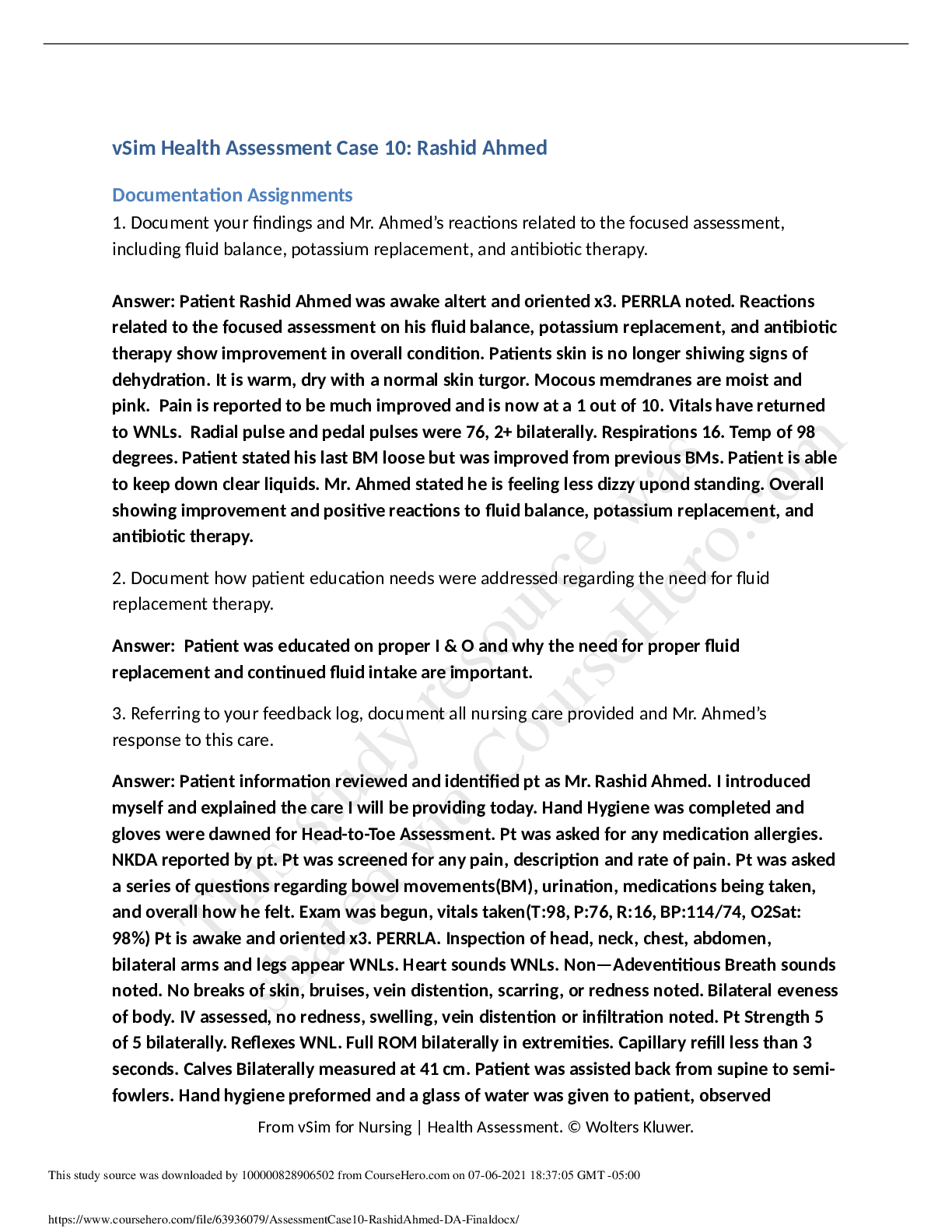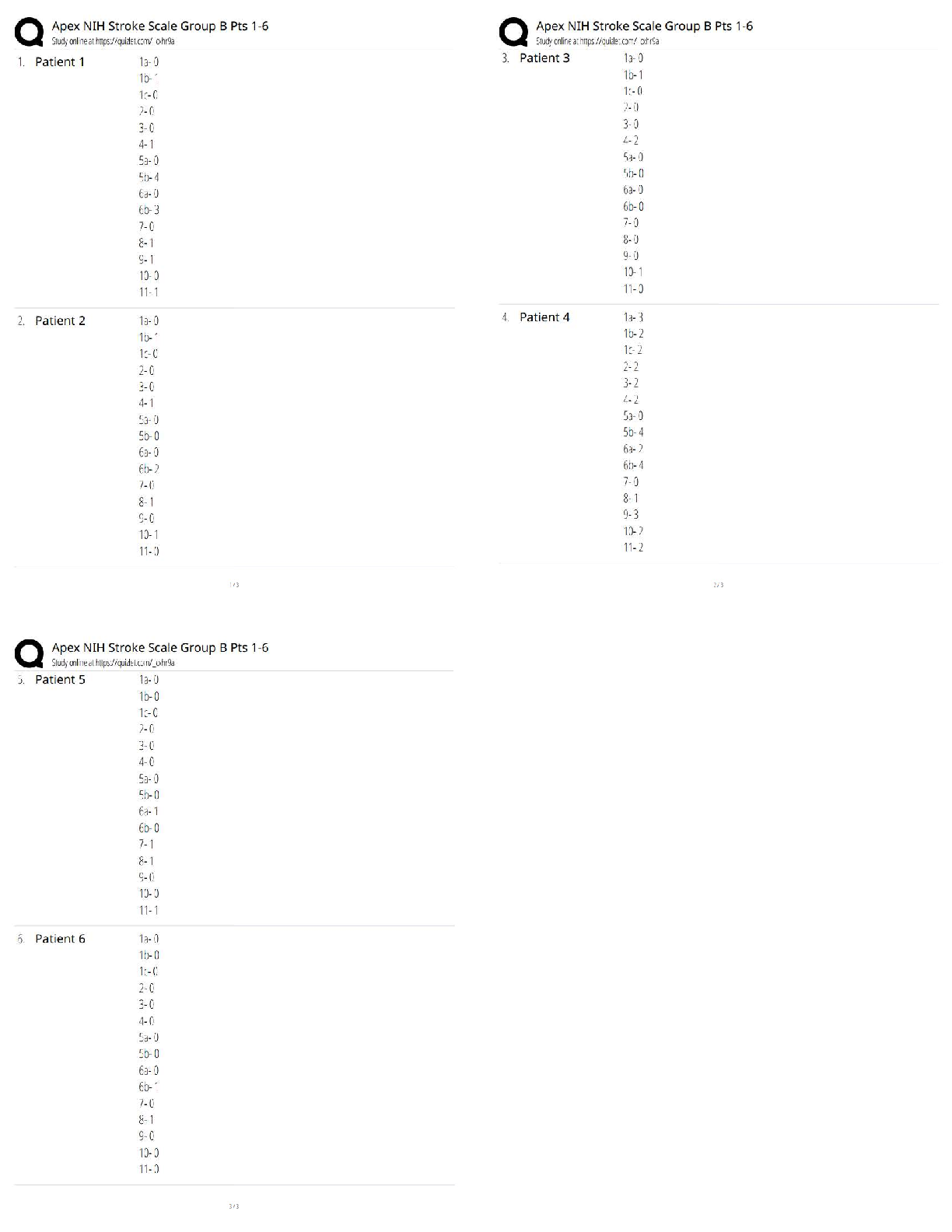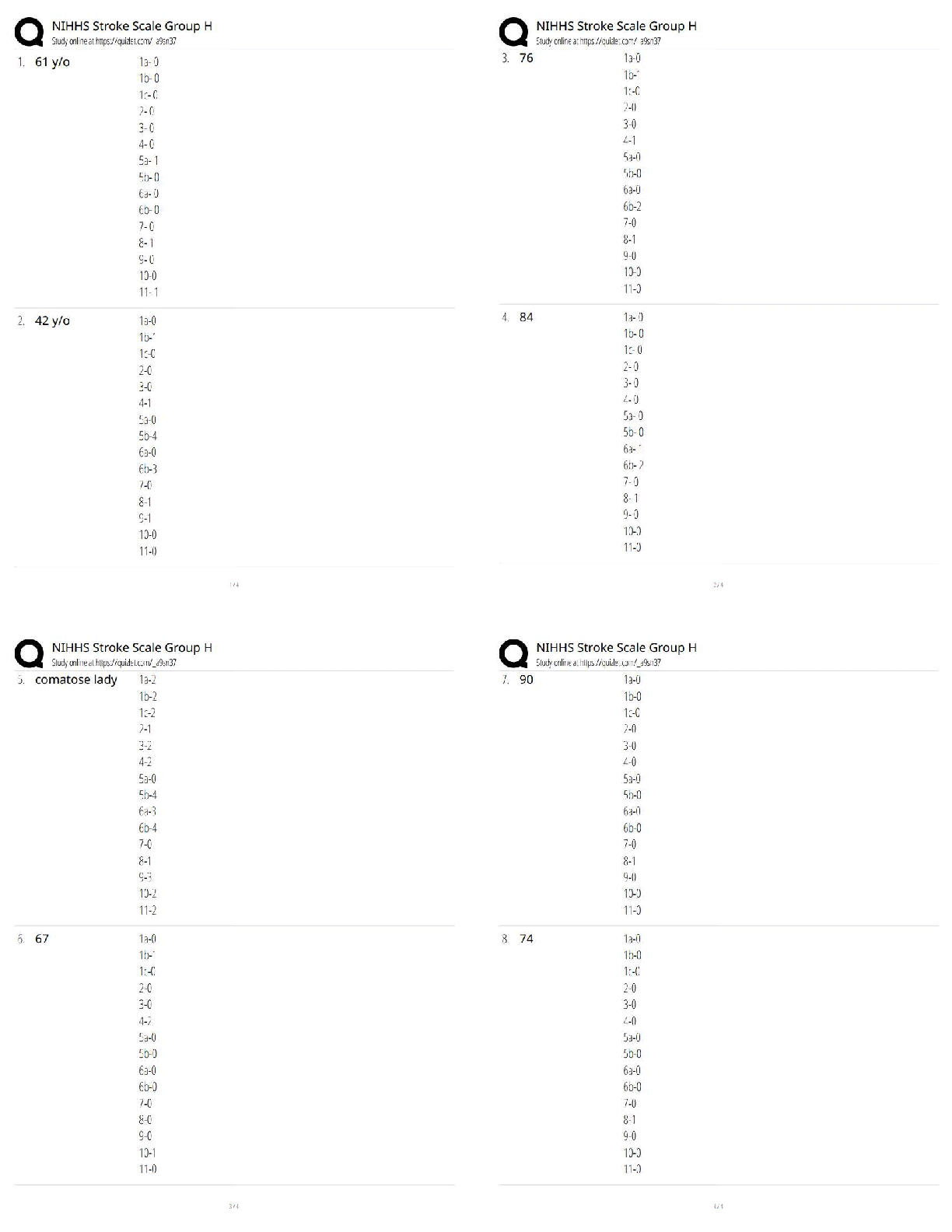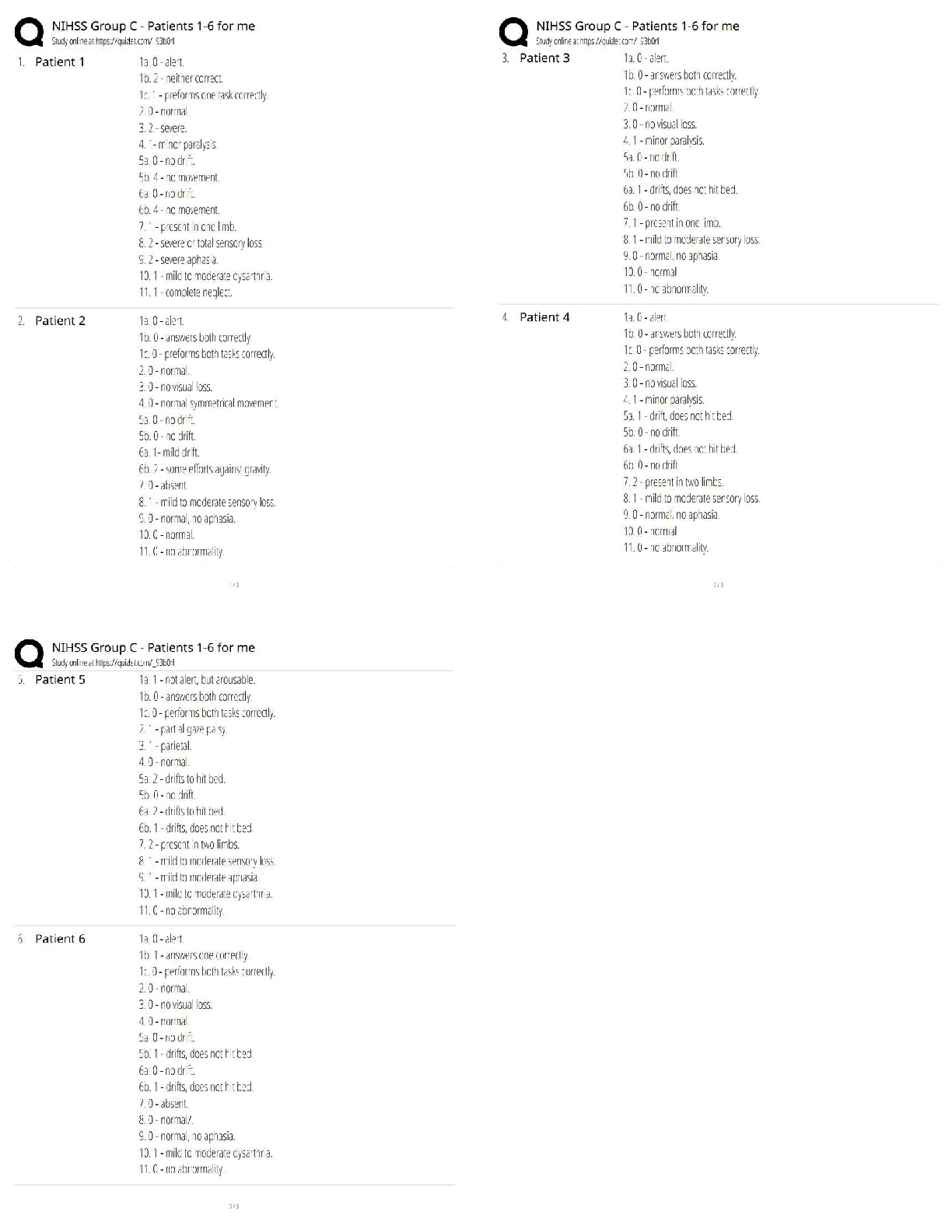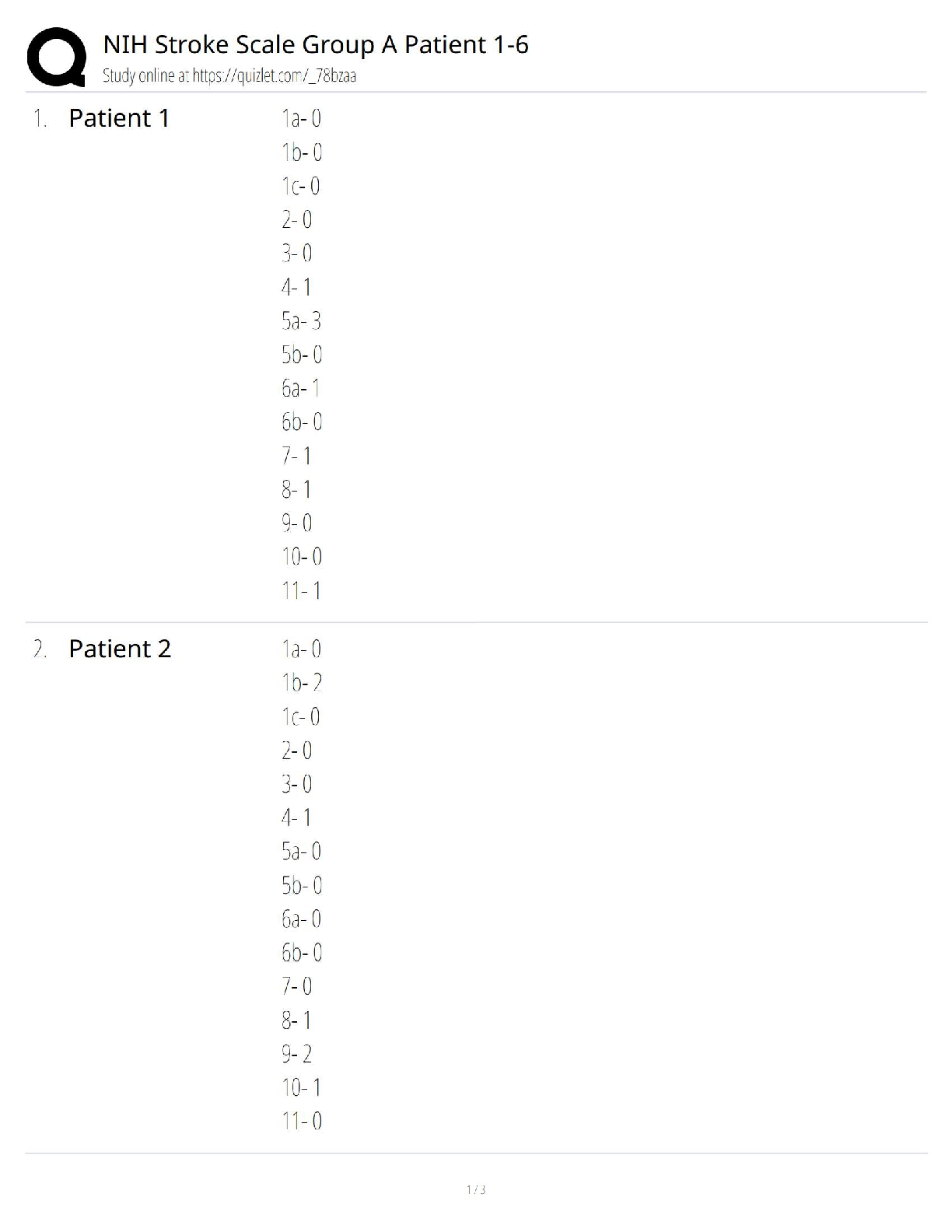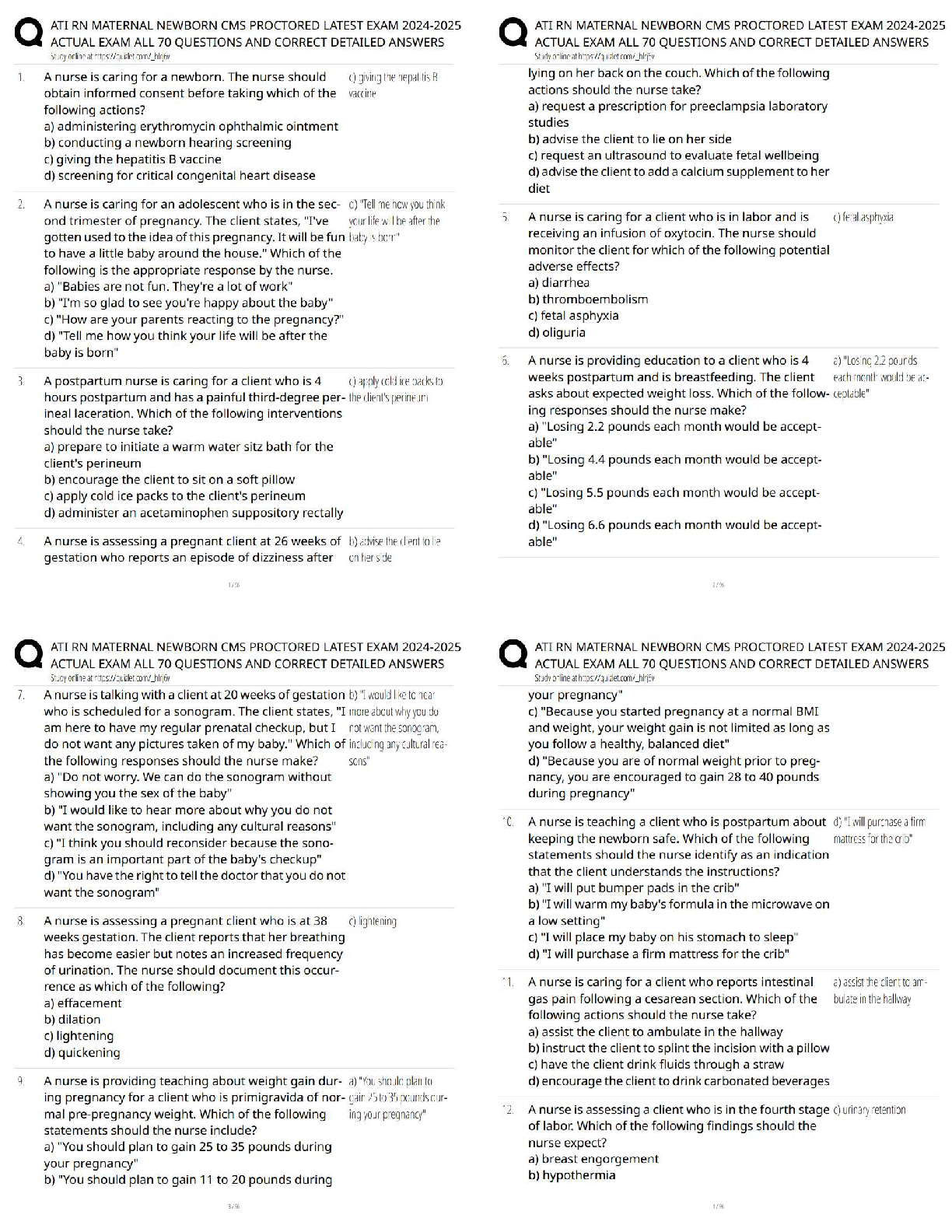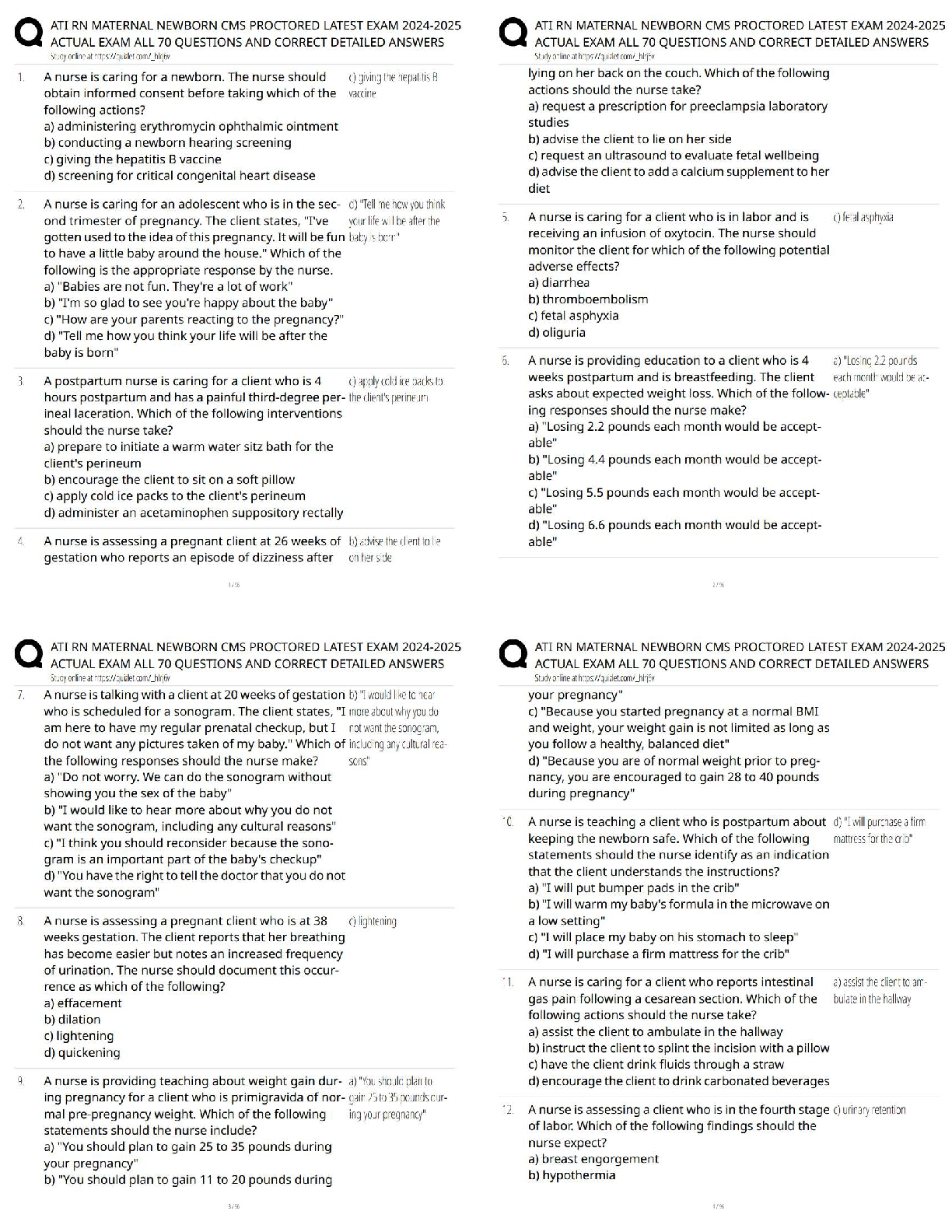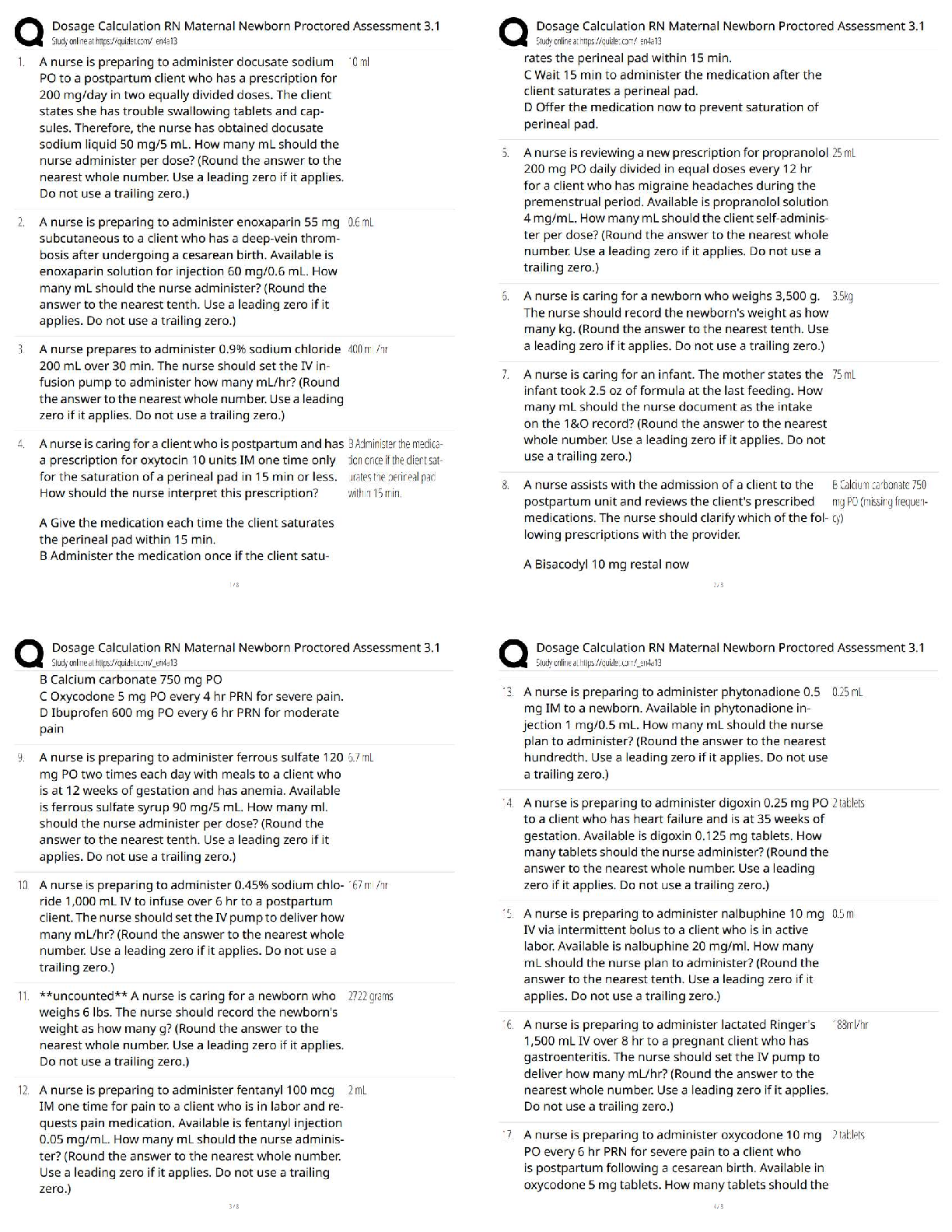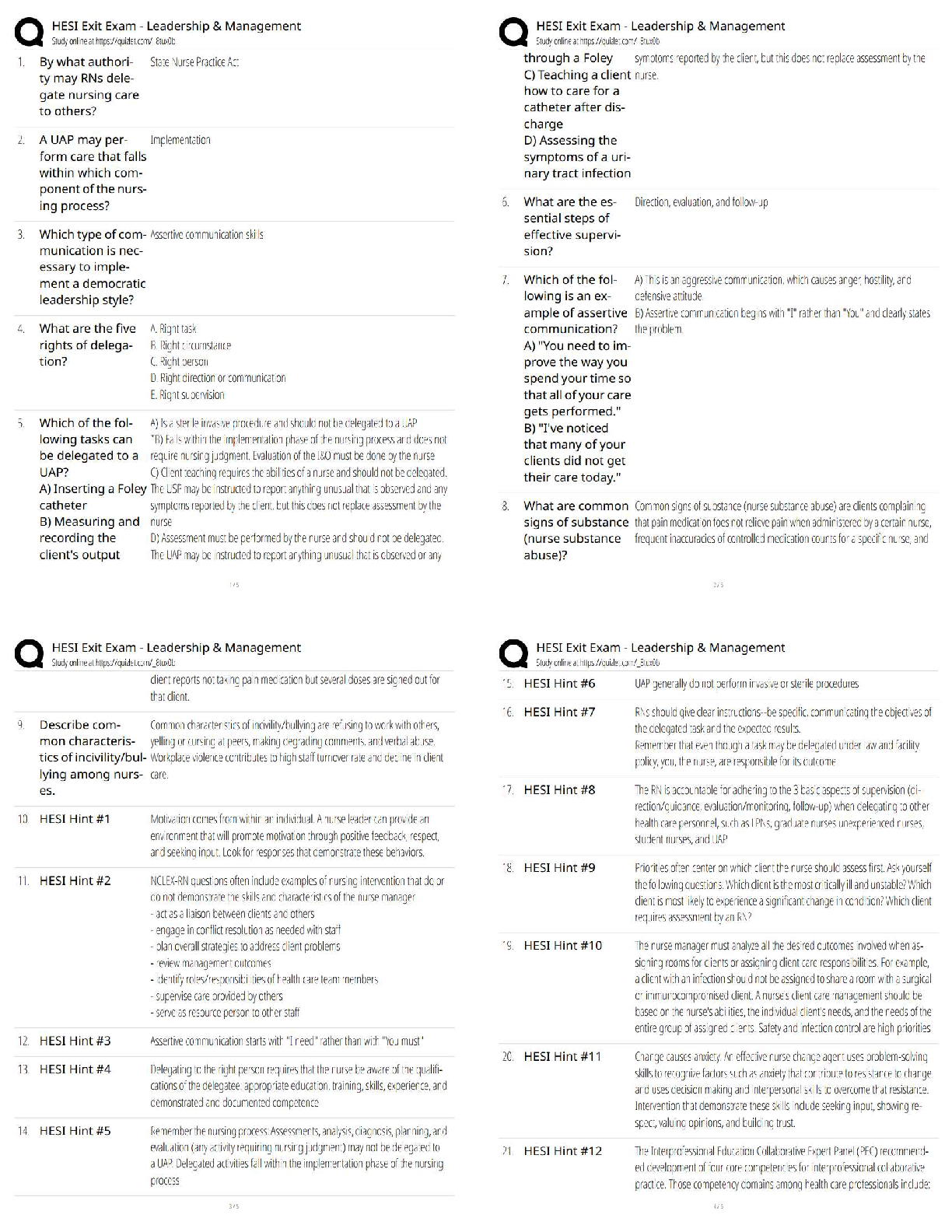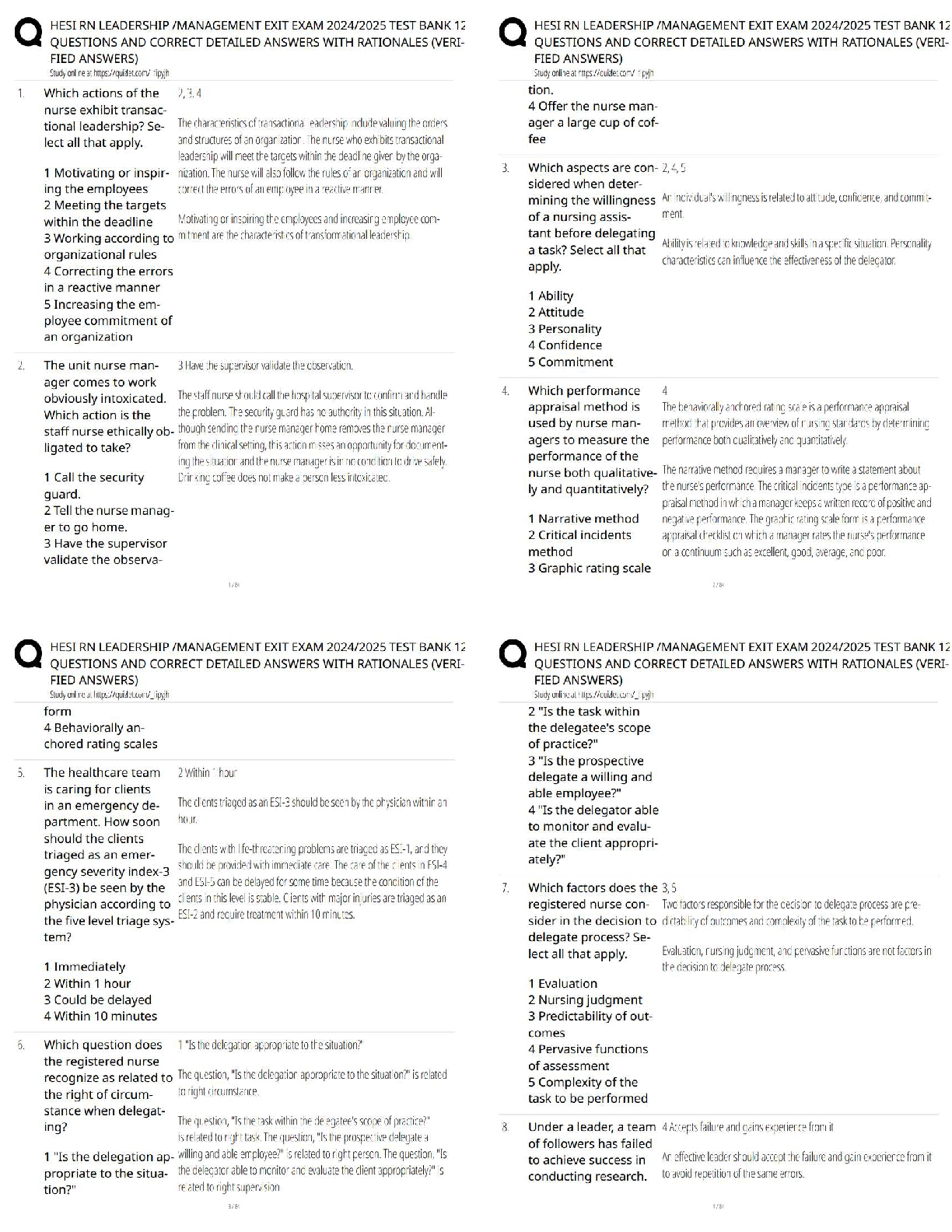Fundamentals Exam 1 NCLEX Practice Questions with 100% Accurate answers. Graded A+
Document Content and Description Below
A 52-year-old woman is admitted with dyspnea and discomfort in her left chest with deep breaths. She has smoked for 35 years and recently lost over 10 lbs. Her vital signs on admission are: HR 112, BP
...
138/82, RR 22, tympanic temperature 36.8° C (98.2° F), and oxygen saturation 94%. She is receiving oxygen at 2 L via a nasal cannula. Which vital sign reflects a positive outcome of the oxygen therapy?
A. Temperature: 37° C (98.6° F)
B. Radial pulse: 112
C. Respiratory rate: 24
D. Oxygen saturation: 96%
E. Blood pressure: 134/78 - ✔✔D. Oxygen saturation: 96%
The licensed practice nurse (LPN) provides you with the change-of-shift vital signs on four of your patients. Which patient do you need to assess first?
A. 84-year-old man recently admitted with pneumonia, RR 28, SpO2 89%
B. 54-year-old woman admitted after surgery for fractured arm, BP 160/86 mm Hg, HR 72
C. 63-year-old man with venous ulcers from diabetes, temperature 37.3° C (99.1° F), HR 84
D. 77-year-old woman with left mastectomy 2 days ago, RR 22, BP 148/62 - ✔✔A. 84-year-old man recently admitted with pneumonia, RR 28, SpO2 89%
A 55-year-old female patient was in a motor vehicle accident and is admitted to a surgical unit after repair of a fractured left arm and left leg. She also has a laceration on her forehead. An intravenous (IV) line is infusing in the right antecubital fossa, and pneumatic compression stockings are on the right lower leg. She is receiving oxygen via a simple face mask. Which sites do you instruct the nursing assistant to use for obtaining the patient's blood pressure and temperature?
A. Right antecubital and tympanic membrane
B. Right popliteal and rectal
C. Left antecubital and oral
D. Left popliteal and temporal artery - ✔✔A. Right antecubital and tympanic membrane
The nurse observes a nursing student taking a blood pressure (BP) on a patient. The nurse notes that the student very slowly deflates the cuff in an attempt to hear the sounds. The patient's BP range over the past 24 hours is 132/64 to 126/72 mm Hg. Which of the following BP readings made by the student is most likely caused by an incorrect technique?
A. 96/40 mm Hg
B. 110/66 mm Hg
C. 130/90 mm Hg
D. 156/82 mm Hg - ✔✔C. 130/90 mm Hg
As you are obtaining the oxygen saturation on a 19-year-old college student with severe asthma, you note that she has black nail polish on her nails. You remove the polish from one nail, and she asks you why her nail polish had to be removed. What is the best response?
A. Nail polish attracts microorganisms and contaminates the finger sensor.
B. Nail polish increases oxygen saturation.
C. Nail polish interferes with sensor function.
D. Nail polish creates excessive heat in sensor probe. - ✔✔C. Nail polish interferes with sensor function.
A patient has been hospitalized for the past 48 hours with a fever of unknown origin. His medical record indicates tympanic temperatures of 38.7° C (101.6° F) (0400), 36.6° C (97.9° F) (0800), 36.9° C (98.4° F) (1200), 37.6° C (99.6° F) (1600), and 38.3° C (100.9° F) (2000). How would you describe this pattern of temperature measurements?
A. Usual range of circadian rhythm measurements
B. Sustained fever pattern
C. Intermittent fever pattern
D. Resolving fever pattern - ✔✔C. Intermittent fever pattern
A patient presents in the clinic with dizziness and fatigue. The nursing assistant reports a slow but regular radial pulse of 44. What is your priority intervention?
A. Request that the nursing assistant repeat the pulse check
B. Call for a stat electrocardiogram (ECG)
C. Assess the patient's apical pulse and evidence of a pulse deficit
D. Prepare to administer cardiac-stimulating medications - ✔✔C. Assess the patient's apical pulse and evidence of a pulse deficit
Which patient is at highest risk for tachycardia?
A. A healthy basketball player during warmup exercises
B. A patient admitted with hypothermia
C. A patient with a fever of 39.4° C (103° F)
D. A 90-year-old male taking beta blockers - ✔✔C. A patient with a fever of 39.4° C (103° F)
A patient has been admitted for a cerebrovascular accident (stroke). She cannot move her right arm, and she has a right-sided facial droop. She is able to eat with her dentures in place and swallow safely. The nursing assistive personnel (NAP) reports to you that the patient will not keep the oral thermometer probe in her mouth. What direction do you provide to the NAP?
A. Direct the NAP to hold the thermometer in place with her gloved hand
B. Direct the NAP to switch the thermometer probe to the left sublingual pocket
C. Direct the NAP to obtain a right tympanic temperature
D. Direct the NAP to use a temporal artery thermometer from right to left - ✔✔D. Direct the NAP to use a temporal artery thermometer from right to left
The nursing assistive personnel (NAP) informs you that the electronic blood pressure machine on the patient who has recently returned from surgery following removal of her gallbladder is flashing a blood pressure of 65/46 and alarming. What is the correct order for care activities?
1. Press the start button of the electronic blood pressure machine to obtain a new reading.
2. Obtain a manual blood pressure with a stethoscope.
3. Check the patient's pulse distal to the blood pressure cuff.
4. Assess the patient's mental status.
5. Remind the patient not to bend her arm with the blood pressure cuff.
A. 5, 3, 1, 4, 2
B. 3, 2, 1, 4, 5
C. 4, 1, 3, 2, 5
D. 1, 2, 4, 3, 5
E. 2, 3, 1, 4, 5 - ✔✔C. 4, 1, 3, 2, 5
Which of the following patients are at most risk for tachypnea? (Select all that apply.)
A. Patient just admitted with four rib fractures
B. Woman who is 9 months' pregnant
C. Adult who has consumed alcoholic beverages
D. Adolescent waking from sleep
E. Three-pack-per-day smoker with pneumonia - ✔✔A. Patient just admitted with four rib fractures
B. Woman who is 9 months' pregnant
E. Three-pack-per-day smoker with pneumonia
A healthy adult patient tells the nurse that he obtained his blood pressure in "one of those quick machines in the mall" and was alarmed that it was 152/72 when his normal value ranges from 114/72 to 118/78. The nurse obtains a blood pressure of 116/76. What would account for the blood pressure of 152/92? (Select all that apply.)
A. Cuff too small
B. Arm positioned above heart level
C. Slow inflation of the cuff by the machine
D. Patient did not remove his long-sleeved shirt
E. Insufficient time between measurements - ✔✔A. Cuff too small
E. Insufficient time between measurements
A patient is admitted for dehydration caused by pneumonia and shortness of breath. He has a history of heart disease and cardiac dysrhythmias. The nursing assistant reports his admitting vital signs to the nurse. Which measurements should the nurse reassess? (Select all that apply.)
A. Right arm BP: 118/72
B. Radial pulse rate: 72 and irregular
C. Temporal temperature: 37.4° C (99.3° F)
D. Respiratory rate: 28
E. Oxygen saturation: 99% - ✔✔B. Radial pulse rate: 72 and irregular
D. Respiratory rate: 28
E. Oxygen saturation: 99%
The nurse is explaining the appropriate methods for measuring an accurate temperate to an unlicensed assistive personnel (UAP). Which method, if noted by the UAP as being an appropriate method, indicated the need for further teaching?
A. Taking a rectal temperature for a client who has undergone nasal surgery
B. Taking an oral temperature for a client with a cough and nasal congestion
C. Taking an axillary temperature for a client who has just consumed hot coffee
D. Taking a temporal temperature on the neck behind the ear for a client who is diaphoretic - ✔✔B. Taking an oral temperature for a client with a cough and nasal congestion
A staff nurse is precasting a new graduate nurse and the new graduate is assigned to care for a client with chronic pain. Which statement, if made by the new graduate nurse, indicates the need for further teaching regarding pain management?
A. "I will be sure to ask my client what his pain level is on a scaled of 0 to 10."
B. "I know that I should follow up after giving medication to make sure it is effective."
C. "I know that pain in the older client might manifest as sleep disturbances or depression."
D. "I will be sure to cue in to any indicators that the client may be exaggerating their pain." - ✔✔D. "I will be sure to cue in to any indicators that the client may be exaggerating their pain."
The nurse is caring for a postoperative client who is receiving demand-dose hydromorphone via a patient-controlled analgesia (PCA) pump for pain control. The nurse enters the client's room and finds the client drowsy and records the following vital signs: temperature 97.2 F (36.2 C) orally, pulse 52 beats per minute, blood pressure 101/58 mm Hg, respiratory rate 11 breaths per minute, and SpO2 of 93% on 3 liters of oxygen via nasal cannula. Which action should the nurse take next?
A. Document the findings.
B. Attempt to rouse the client.
C. Contact the health care provider (HCP) immediately.
D. Check the medication administration history on the PCA pump. - ✔✔B. Attempt to rouse the client.
Two patient deaths have occurred on a medical unit in the last month. The staff notices that everyone feels pressured and team members are getting into more arguments. As a nurse on the unit, what will best help you manage this stress?
A. Keep a journal
B. Participate in a unit meeting to discuss feelings about the patient deaths
C. Ask the nurse manager to assign you to less difficult patients
D. Review the policy and procedure manual on proper care of patients after death - ✔✔B. Participate in a unit meeting to discuss feelings about the patient deaths
A nurse has seen many cancer patients struggle with pain management because they are afraid of becoming addicted to the medicine. Pain control
[Show More]
Last updated: 3 years ago
Preview 1 out of 20 pages

 (1).png)
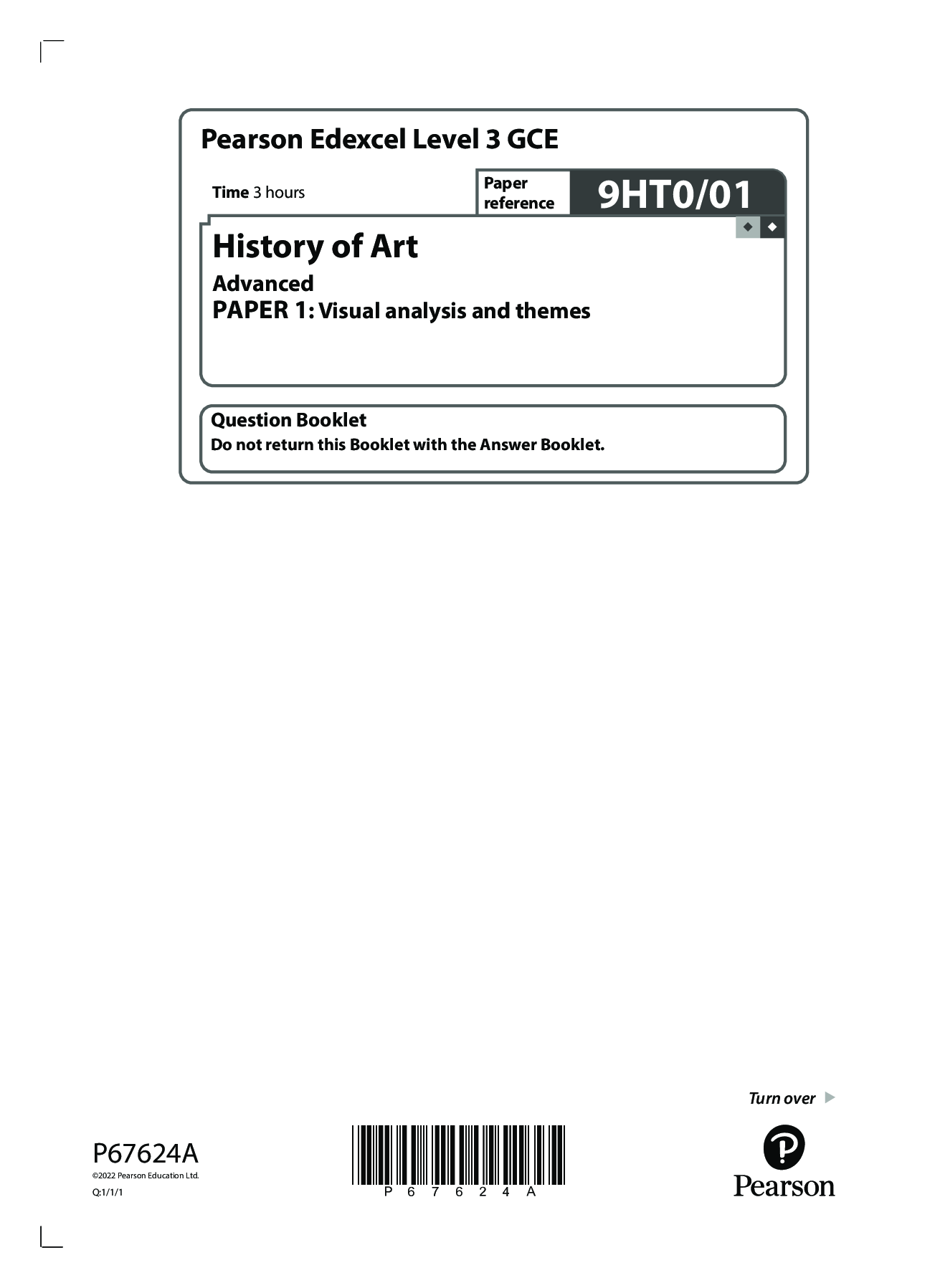

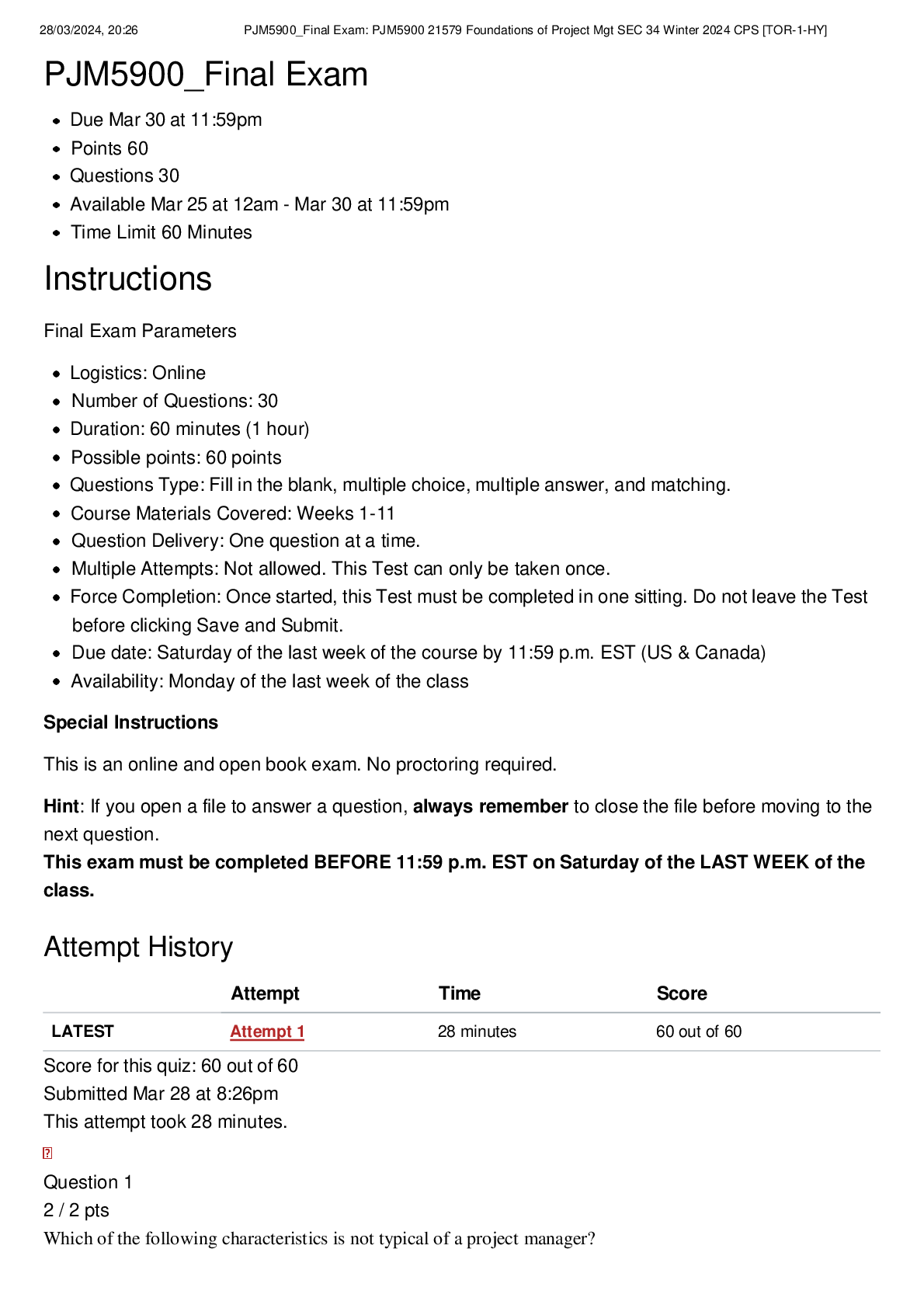

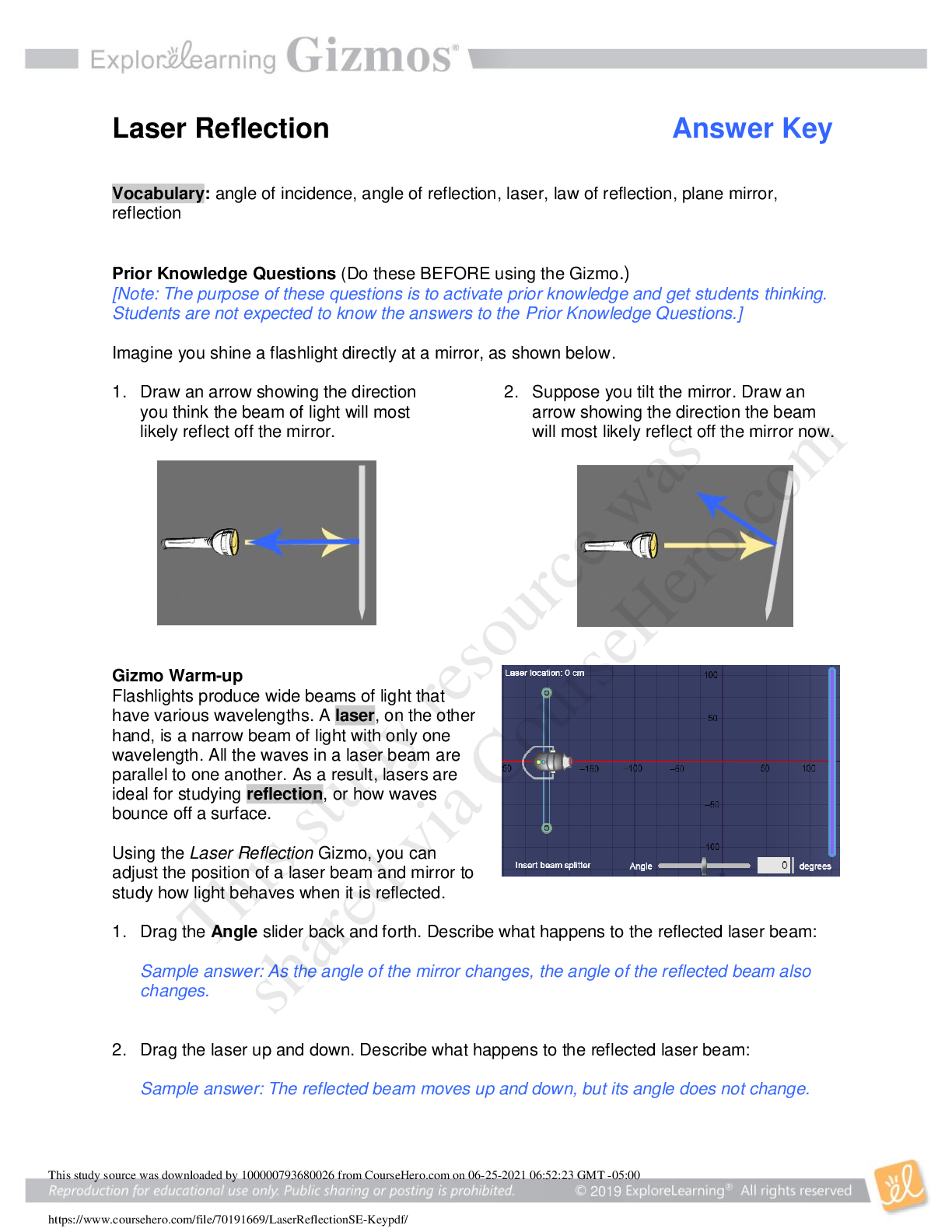
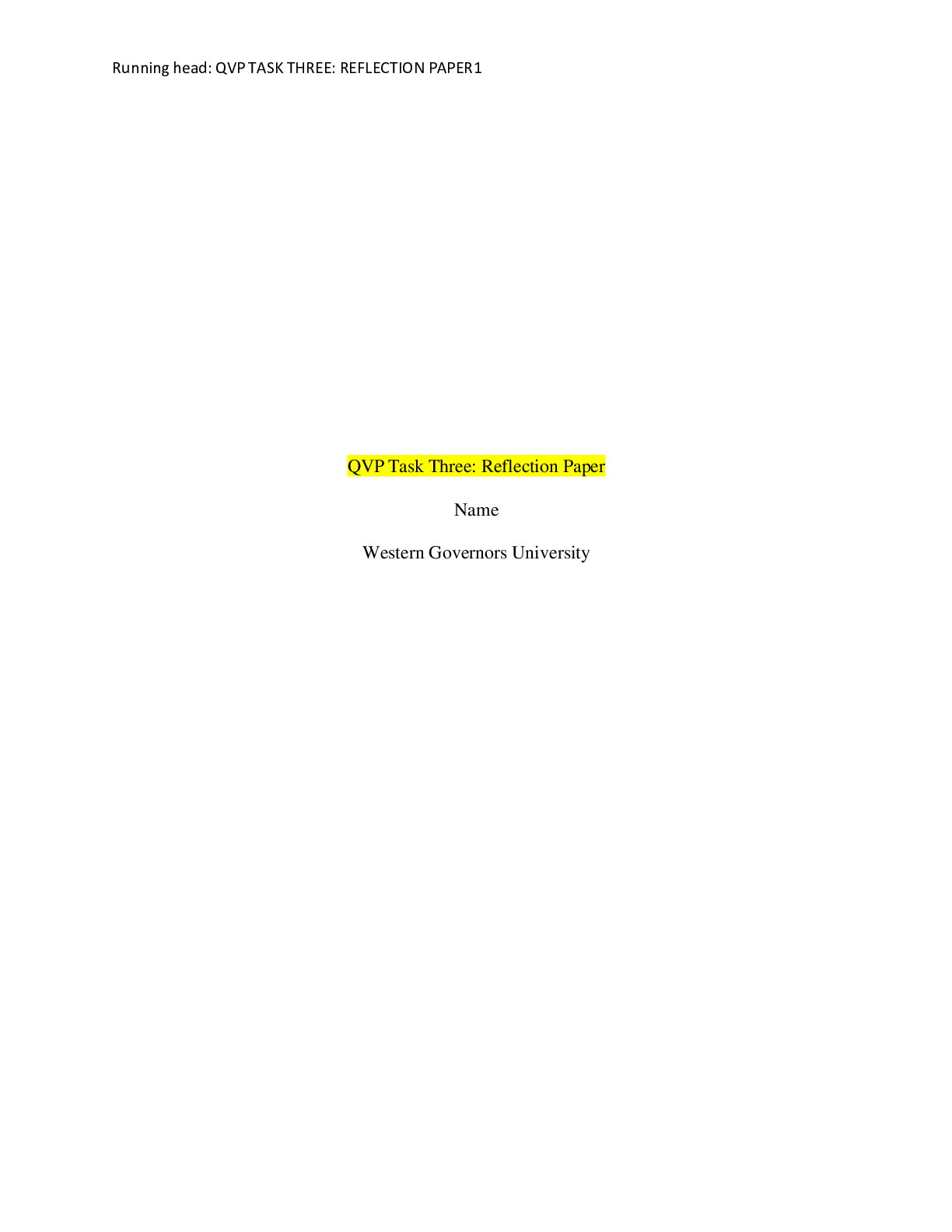
.png)


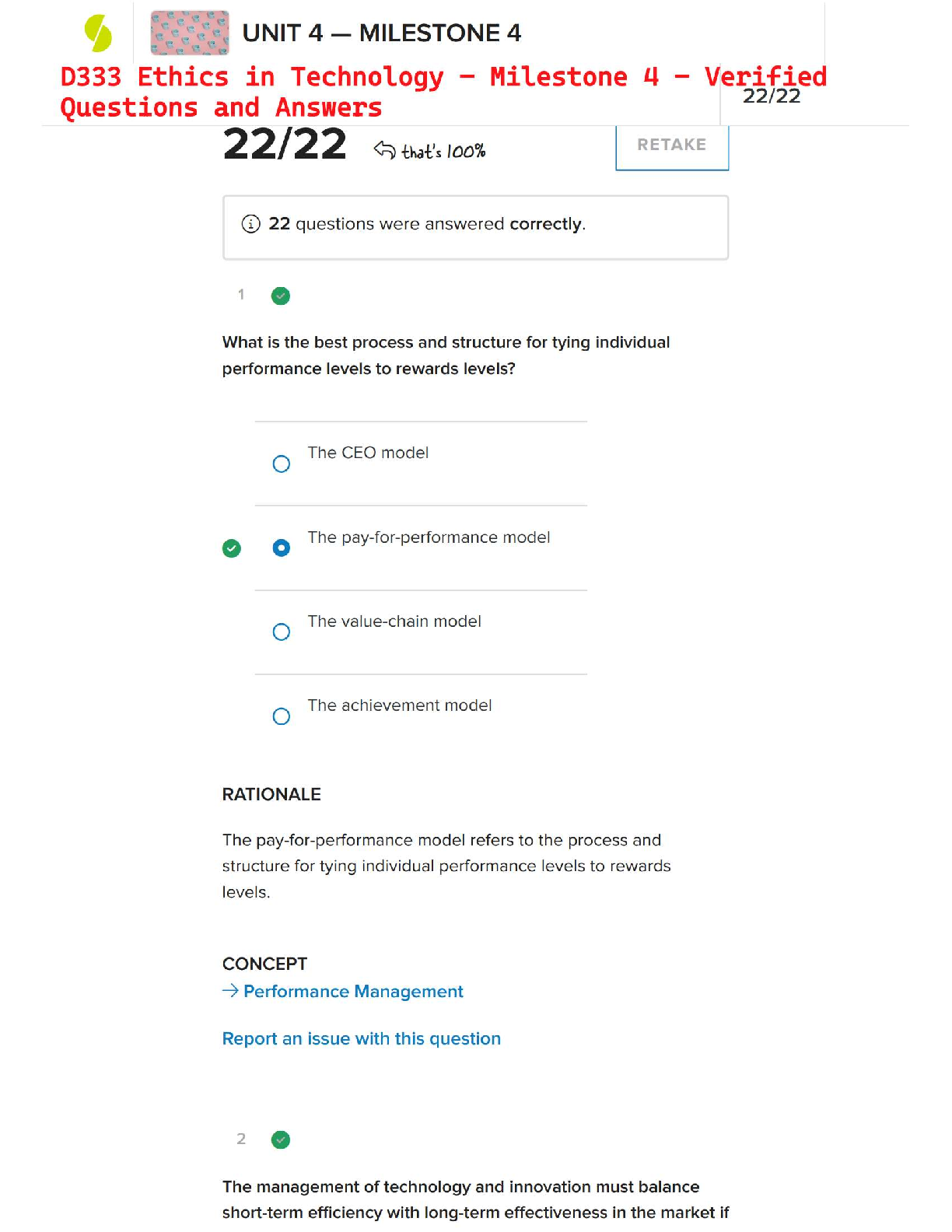

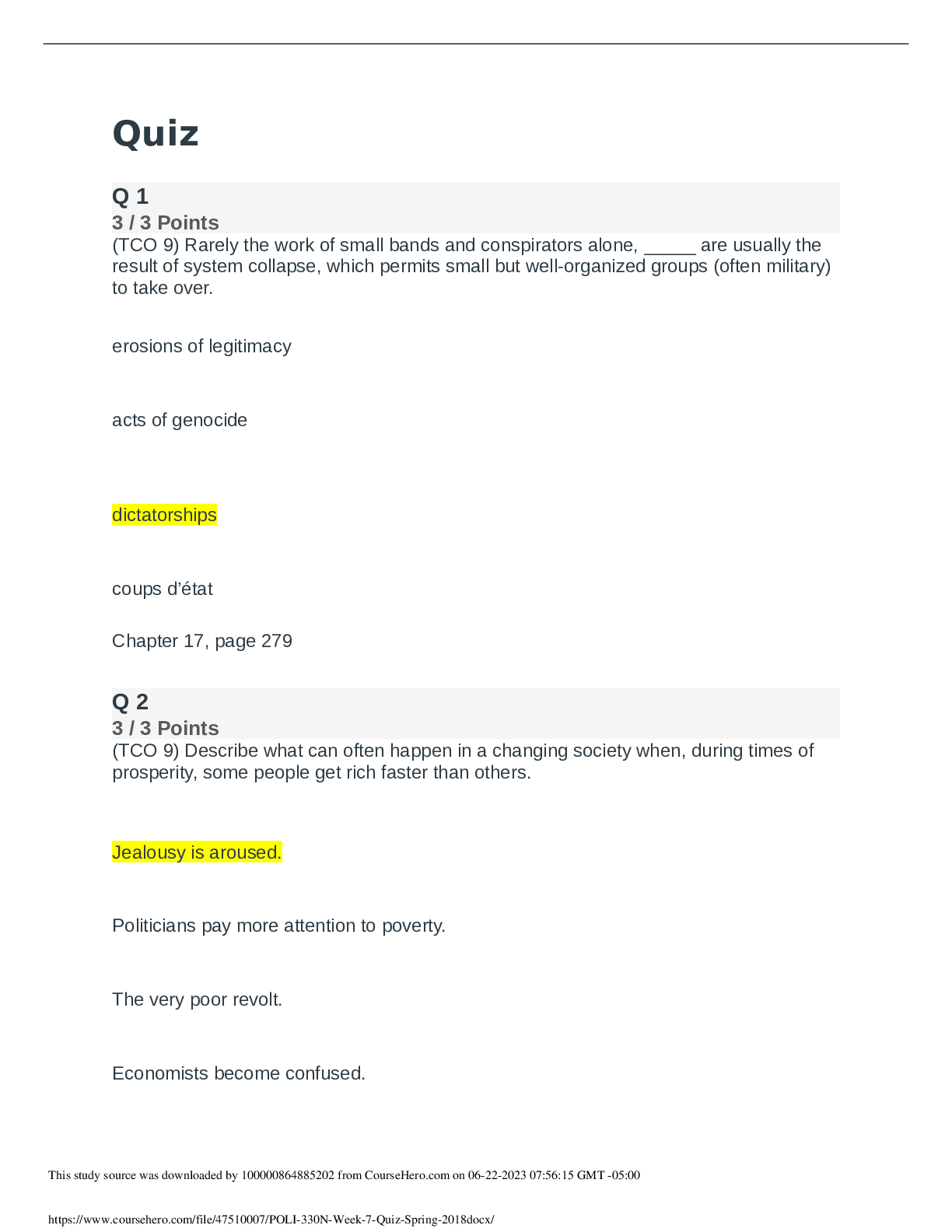




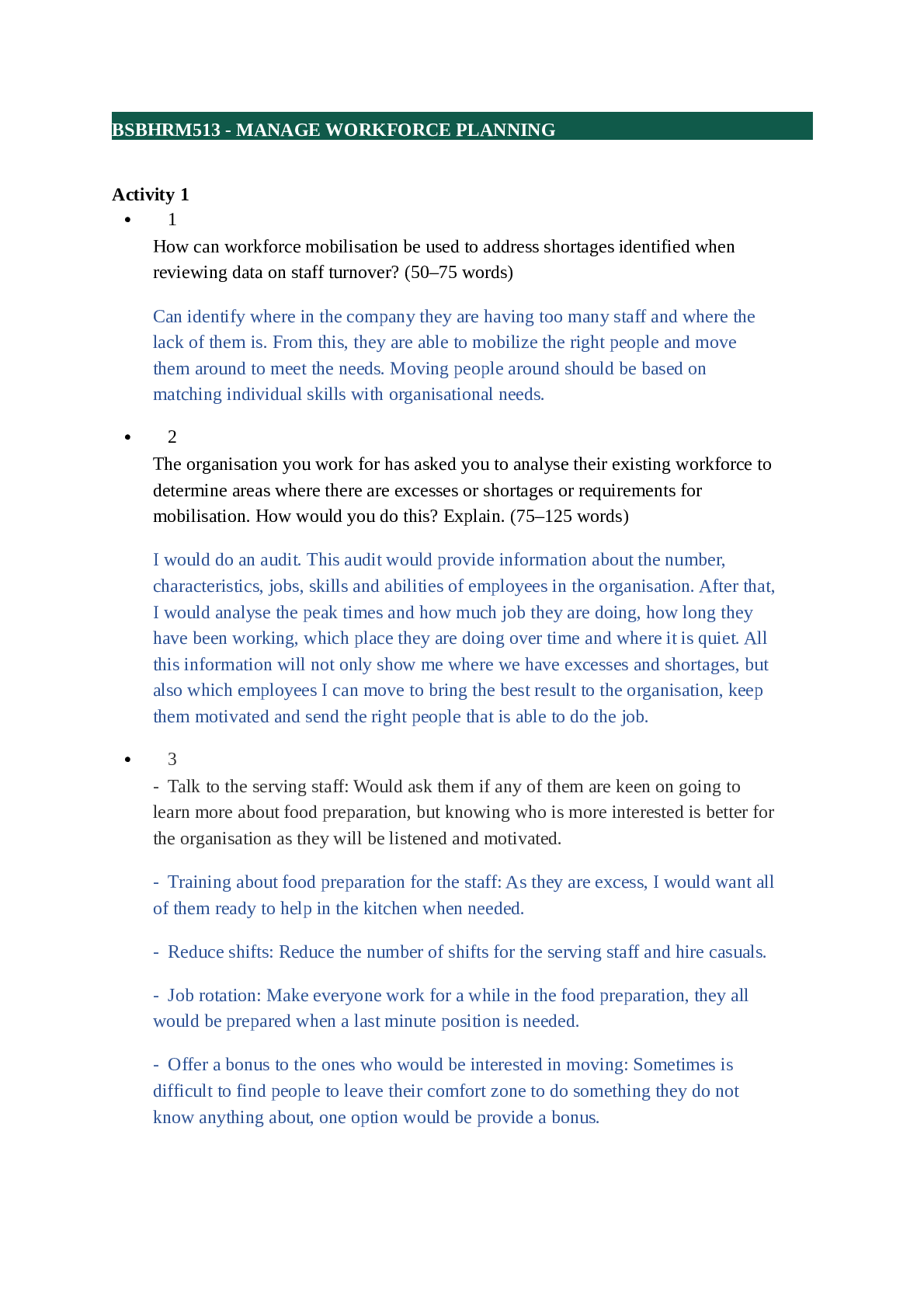
.png)
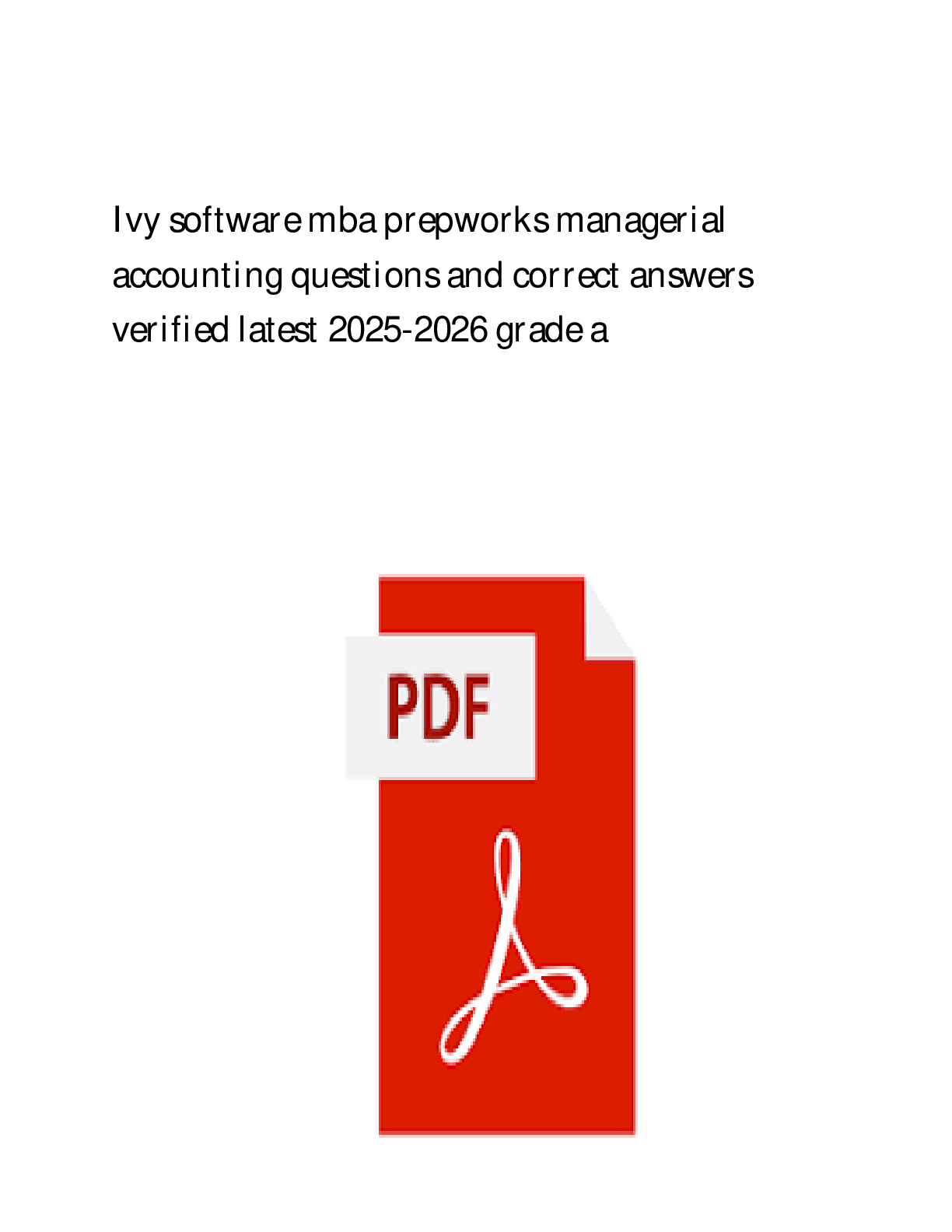
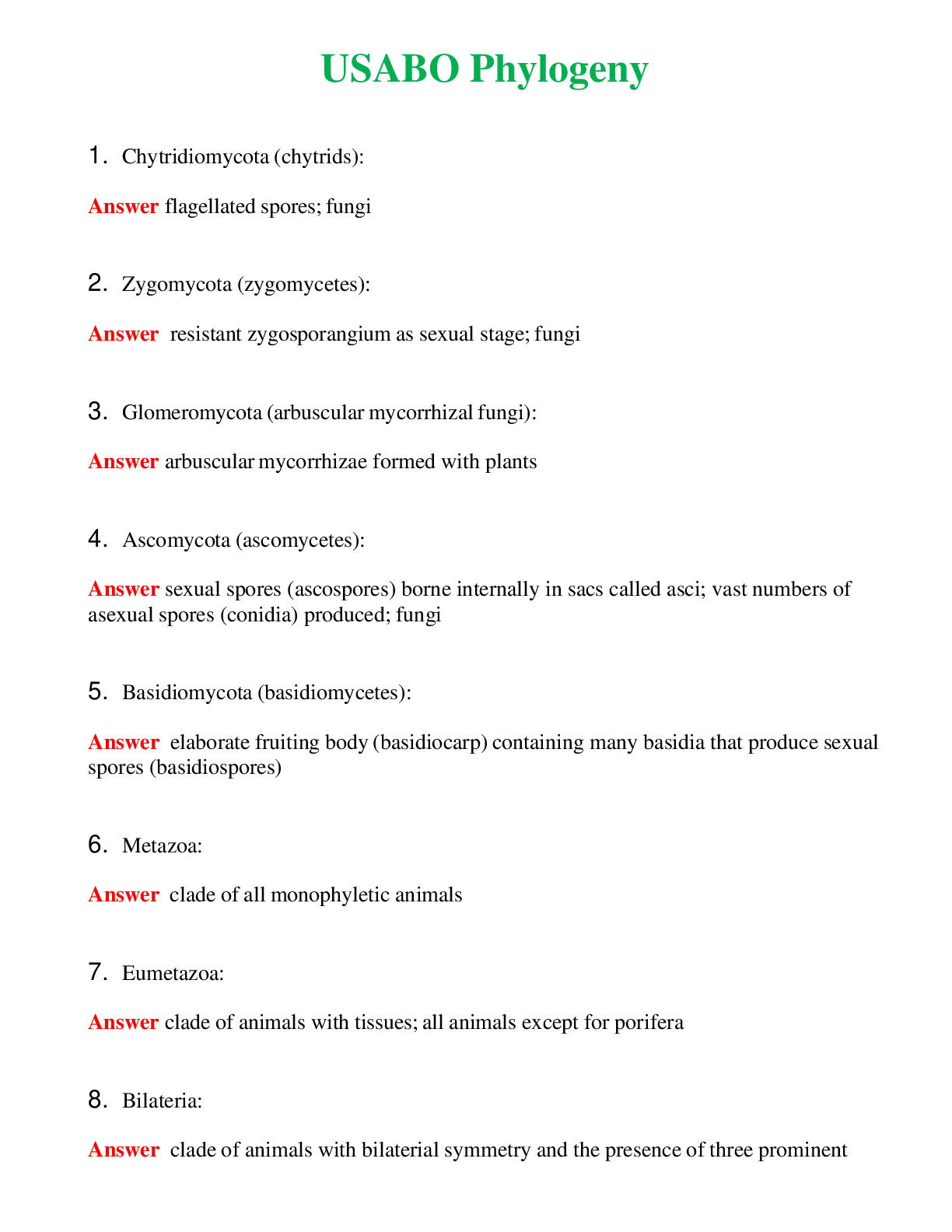


.png)
.png)

.png)

